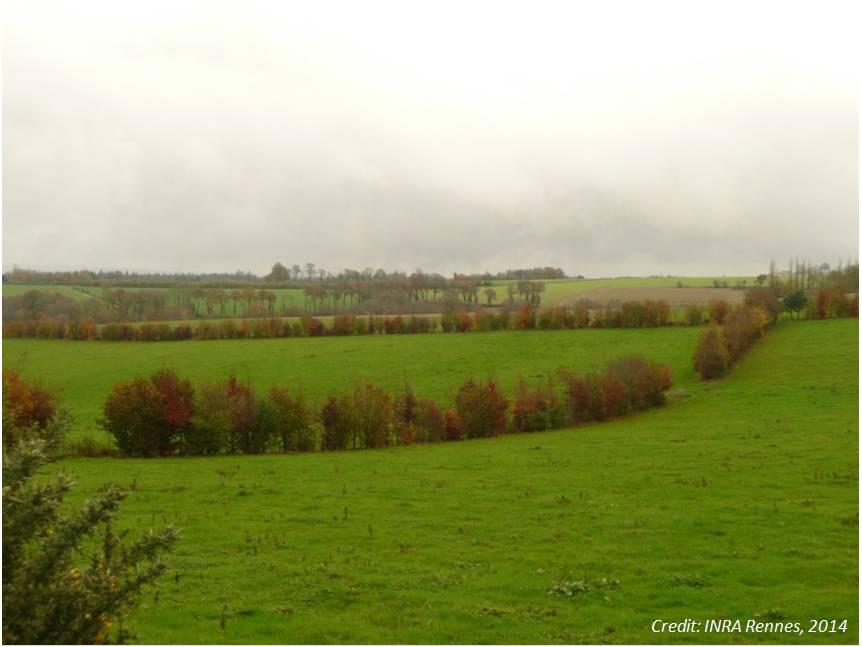
Bocage in Bretagna, Francia
Descrizione del sistema
I Bocage della Bretagna sono antichi sistemi agroforestali costituiti prevalentemente da formazioni lineari di specie arboree. Tali sistemi agroforestali erano particolarmente diffusi dal XVIII fino alla fine del XIX secolo. A partire dal 1950 il processo di modernizzazione ed intensificazione dell’agricoltura ha determinato una riduzione della presenza di tali sistemi agroforestali. La densità media dei filari varia da 16 a 19 m/ha. A partire dagli anni ‘90 del secolo scorso, si è registrato un ritorno di interesse verso questi sistemi lineari al fine di mantenere il valore culturale del paesaggio e regolare l’inquinamento delle falde idriche.
Meeting iniziale con gli stakeholders
Il meeting è stato organizzato il 26 novembre 2014 in collaborazione con l’associazione “Terres & Bocages” ed ha visto la partecipazione di 42 persone. Gli aspetti positivi di questi sistemi, come percepito dai partecipanti al meeting, sono la conservazione della biodiversità e degli habitat naturali, la conservazione del suolo, la regimazione delle acque e il sequestro del carbonio. Gli aspetti negativi sono legati ai costi di gestione e di mantenimento. L’attività di ricerca dovrebbe principalmente incentrarsi per individuare l’ottima densità degli alberi per permettere di garantire la funzione di protezione e di produzione di legname sulla stessa formazione lineare e lo sviluppo di sistemi modello in grado di ottimizzare queste funzioni. Per maggior informazioni su questi sistemi, contattare Dr Claudine Thenail; Claudine.thenail@rennes.inra.fr
Download the initial stakeholder report
Download the initial research and development protocol
Download the system description
A research update on the bocage agroforestry system in Brittany was produced in February 2016.
Lessons learnt
Claudine Thenail, Stéphanie Aviron, Valérie Viaud and colleagues at INRA Rennes in Brittany describe the lessons learnt regarding the French bocage system of hedgerows.
- Newly planted hedgerows (15 years after planting) harboured the same number of species (flora, butterflies, carabid beetles) as the traditional field margins.
- Although the results were not statistically significant, soil carbon levels in top soils were higher within 6 m of the hedgerow than at a distance of 18 m.
- At a field level, there is no simple relationship between wheat yield and whether the field was bordered by flat herbaceous field margins, old and/or new planted hedgerows.
- At least three of six farmers, asked about the time spent on hedgerow management, indicated that they or their staff spent 5-20 periods of 5 hours per year on the cumulated activities of tree pollarding, tree lateral pruning, and mechanical brush clearing.
- According to the interviewed farmers, the new hedgerows were providing protection for cattle, successfully constraining cattle movement, the regulation of runoff and soil erosion, improved landscape aesthetics, and successful designation of property limits. Firewood production and the protection of wild fauna were mentioned as supplementary benefits.